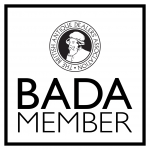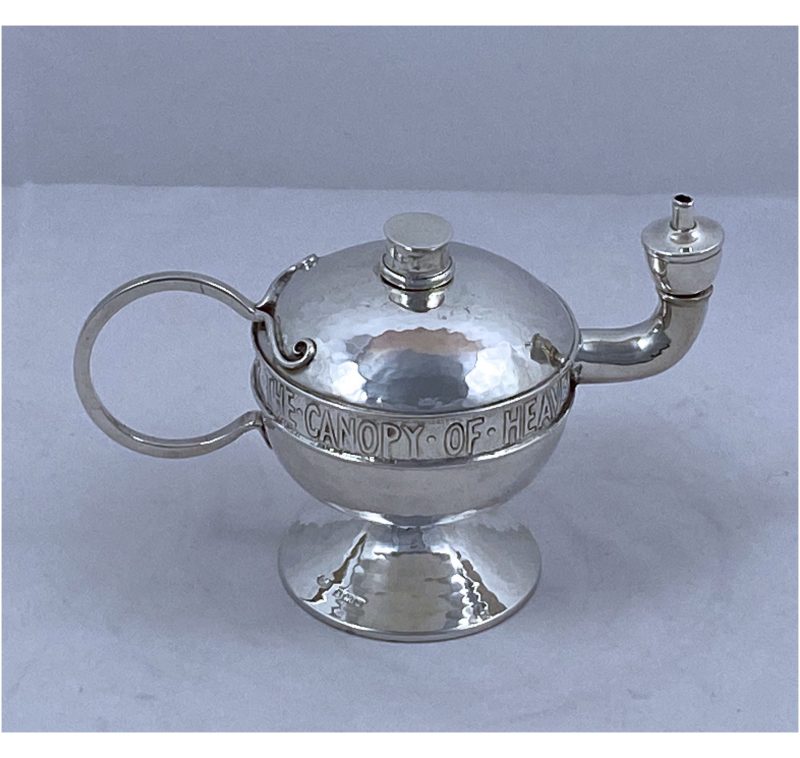
Albert Edward Jones
Albert Edward Jones was born in 1878 into a family of craftsmen dating back to 1780 and died in 1954. "A piece of silverwork to be really interesting must be endued with a Spirit of Art....." - A. E. Jones, 1906.
Apprenticed to Woodwards and then Hardman Powells. He trained at the Birmingham Central School of Arts under Edward Taylor, where he gained a reputation as a developer and innovator.
He worked as a Guildsman at the Birmingham Guild of Handicraft where he was influenced by the Arts and Crafts Movement and met many artists and designers. Having made some bronzeware at his father's premises, he left the family metalwork business and set up on his own in 1902. Success came quickly, with the workshop attracting a talented group of artists and craftsmen inspired by the Arts and Crafts movement.
In 1905, he acquired Jesson and Birkett with its trade mark of St. Dunstan hand-raising a bowl. He collaborated with Edward Taylor's son, Howson, owner of Ruskin Pottery, in mounting and using the coloured pottery as liners for some of his silverwork (which at this time was all hand raised).
The company produced many clock cases with French movements and a considerable amount of ecclesiastical work.
In 1958, his son, Kenneth Crisp Jones (also trained at the Central School of Art Birmingham), took over the business which was then acquired by C. J. Vander of Sheffield.







